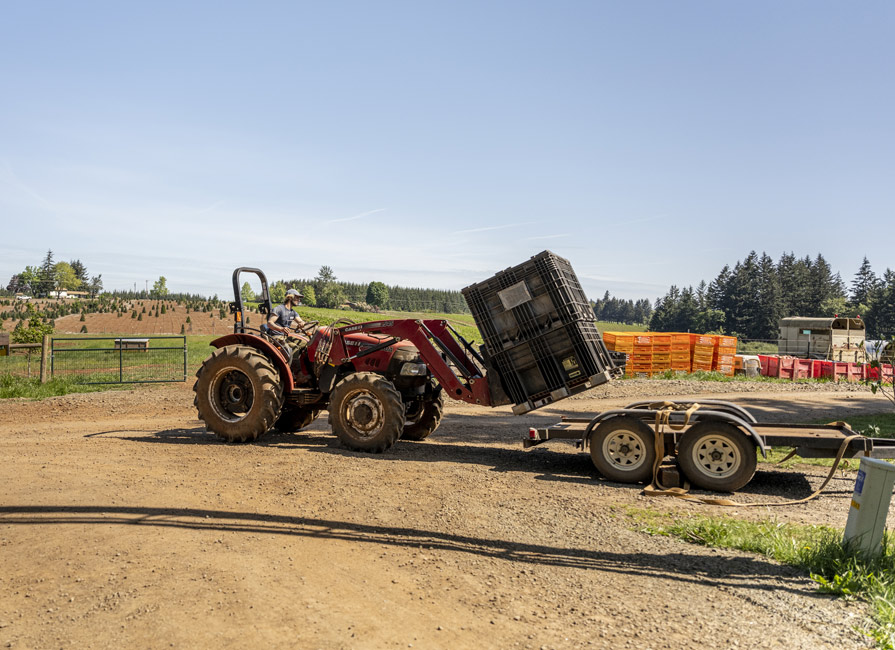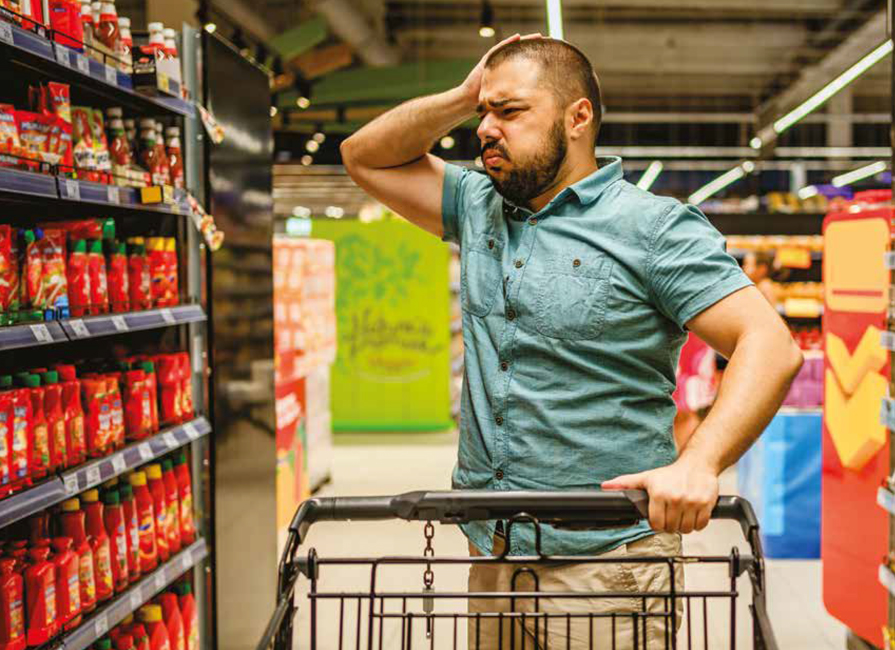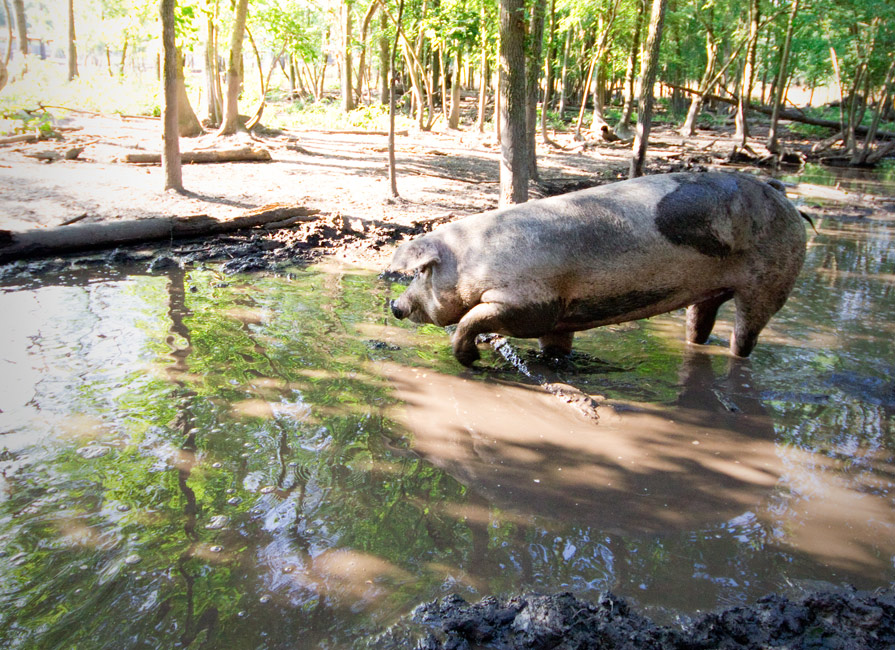One of the key attractions of our Certified Regenerative by AGW program is its practical…

Staying Safe On The Farm
Farming is not just a job: it is a way of life that most people involved truly love. Unfortunately, there are many associated dangers …
According to the U.S. Bureau of Labor Statistics, in 2022, agriculture had a fatality rate of 20 deaths per 100,000 workers—more than five times the rate for all industries, and far exceeding other industries considered hazardous like mining. There are many unique aspects about agriculture that have led to these alarming statistics. Farm families and workers are exposed to a host of mechanical and environmental hazards every day that increase the risk of injury or death.
Tractor related incidents
Approximately half to a third of all farmer fatalities are tractor-related incidents. Tractor rollovers are the single most common type of tractor fatality. Some tractors have a safety feature called ROPS (rollover protective structures) that will protect the tractor operator in the event of a tractor rollover, limiting the rollover and creating a safe area around the operator’s seat.
ROPS are 99% effective if the operator wears the seatbelt. But while all tractors manufactured after 1985 come equipped with a ROPS and seatbelts, current research reveals that approximately 40% of the tractors in the U.S. are still not equipped with ROPS. Hundreds of lives could be saved each year if farmers had ROPS-equipped tractors and wore seatbelts when operating them. The National ROPS Rebate Program helps farmers install these life-saving devices. Some states offer a rebate toward the cost of the ROPS kit, shipping and installation.
Farm machinery
Just about every type of farm uses large, heavy machinery. Common types of machinery-related incidents include runovers, struck-by and crushing incidents, power-take-off (PTO) entanglements, other machinery entanglements and roadway collisions. Farm machinery incidents (other than tractor related) account for another third of farm work fatalities.
When working with farm machinery, always pay attention to the task. Keep young children and other bystanders out of the area where machinery is being used. Always shut off the machinery and wait until it comes to a complete stop before performing any maintenance or repairs. If you have to work under any raised equipment, make sure it is properly locked out or blocked up with appropriate jackstands or mechanical lockouts.
Motor vehicle crashes
Road travel with farm machinery presents a serious occupational hazard for agricultural workers. The busy spring planting and fall harvest seasons are especially dangerous as farmers move tractors and equipment to fields. Thousands of roadway incidents occur each year between agricultural machinery and other motor vehicles.
Agricultural equipment tends to be large and moves slowly, usually less than 25 mph. A hazard exists when fast moving traffic quickly approaches slow moving agricultural machinery. Proper lighting of machinery and use of Slow Moving Vehicle (SMV) emblems help to reduce risks.
Children
There is no other industry where families live right in the middle of a busy, 24-7 workplace. And there is no other industry where young children are routinely performing work with large equipment or live around large animals and other potentially dangerous environments.
According to the National Children’s Center for Rural and Agricultural Health and Safety, a child dies in an agricultural-related incident every three days, while 33 children are injured in agriculture related incidents every day. The leading sources of fatalities among youth on farms were machinery (25%), motor vehicles including ATV’s (17%) and drowning (16%). For youth working on farms, tractors are the leading source of fatalities.
Elderly farmers
Unlike all other industries, there is no real retirement age in farming. Farmers generally work for as long as they are physically able. In fact, the average age of U.S. farmers is close to 60 years old.
While this strong work ethic is commendable, older farmers also experience higher injury rates. Senior farmers may have to take medications, work with physical disabilities or have poorer eyesight and slower reflexes. All of these factors contribute to older farmers having a higher risk for work-related injuries.
Health and safety on small farms
Federal safety and health regulations are not always enforced on farm owners and their immediate family members, or on small farms (10 or less employees) because of special enforcement exemptions granted to agriculture. It is therefore up to each farm to make sure it provides a safe work environment for family members and workers.
Other hazards
Weather, terrain and atmospheric conditions all present daily risks to farmers. Farmers often work long hours in all types of weather and terrain conditions. Floods, droughts and other severe weather cause significant impacts to farms.
Many farmers find it necessary to work at a full or part-time job off the farm, which can further lead to fatigue. Large animals, such as bulls, cows or horses have caused many injuries and fatalities. Learning how to work safely around large animals is absolutely essential.
Planning for safety
Even with all the associated hazards, agriculture is a great way of life and filled with many rewards. Take the time to work safely on your farm and encourage all of your family members and any workers to follow safe work routines. Conduct a safety audit of your farm to identify any potential hazards, such as older tractors without ROPS and seatbelts, missing or damaged PTO shielding, or missing shielding on other types of rotating machinery, unprotected drop-offs or fall hazards.
Some organizations can offer on-farm safety surveys and on-farm safety training at no cost to farms. A number of farm safety audit tools are also available on the internet. Your regional Agricultural Safety and Health Center may be able to provide further advice and support.
FURTHER INFORMATION
For information and safety resources, such as personal protective equipment, retrofit PTO shields and SMV emblems for sale, visit nycamh.org or call 800-343-7527.
For information about the National ROPS Rebate Program, visit ROPSr4u.com or call 1-877-767-7748.
The U.S. Agricultural Safety and Health Centers (10 regional centers) host a YouTube channel with over 90 videos covering personal protective equipment, needlestick prevention, livestock safety, tractor and machinery safety, and more. Visit https://www.youtube.com/@USagCenters or call 800-232-4636.
The U.S. Department of Labor offer plenty of advice and resources on farm safety and health. Visit osha.gov/agricultural-operations.
In Canada, the Canadian Agricultural Safety Association website is a very useful resource. Visit casa-acsa.ca or call 877-452-2272.
Author: James Carrabba is Agricultural Safety Specialist at the New York Center for Agricultural Medicine and Health (NYCAMH)
Originally published in the Spring 2025 issue of AGW’s Sustainable Farming magazine.


